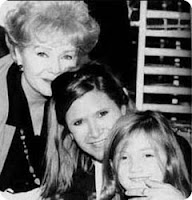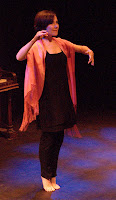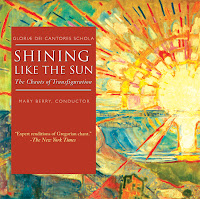
Today everyone is into living green. But it's the only way this country-music legend knew growing up in the Smoky Mountains
This essay by Dolly Parton appeared in Guideposts
magazine. I'm sorry I missed Dolly at our Drama Desk nominees cocktail party this spring. By the time I got there she had always come and gone -- accompanied by body guards on either side. She was nominated for her music for Broadway's
9 to 5. Did you hear? I got a new job this year, one I’m thrilled to pieces about. It’s the 75th anniversary of the Great Smoky Mountains National Park, and they’ve made me their ambassador.
Don’t look so surprised! I know I don’t seem like much of a nature girl and, okay, I probably won’t be going hiking in my heels anytime soon. But the Smokies…they touch my soul. Let me tell you why.
All that I am comes from those mountains where I was born and raised. If I close my eyes, I can see the mist on the peaks, the bluebirds on the fencepost, the meadows filled with purple ironweed and wild daisies.
I remember chasing butterflies and hummingbirds and tying June bugs to a string to make what we called ’lectric kites (don’t worry, we released them). I loved running barefoot in the hills, my feet tender in the spring then brown and tough by summer’s end. Just hearing the word “barefoot” still conjures up a sense of wonder and freedom for me because that’s what I had growing up.
Not that life in the Smokies was easy by today’s standards. I was the fourth of 12 children of a sharecropper and his wife. It was so cold the day I came into the world that when the kitchen in our one-room cabin was mopped, the water left a film of ice on the floor. The doctor rode up on a horse, and I like to think God guided their steps along the snowy mountain ridge leading to our cabin, much the same way he guides my every step today.
The land Daddy farmed then belonged to an old woman named Martha Williams. We called her Aunt Marth. She had an old spinning wheel that seemed as big as a Ferris wheel, and I’d watch her make yarn. It was magical to me, like spinning dreams out of thin air.
Aunt Marth would put me up on her knee and sing: “Tip toe, tip toe, little Dolly Parton, tip toe, tip toe, ain’t she fine…” I was amazed that she knew a song that had my name in it, never thinking that you could put anybody’s name there.
Later on, Daddy bought us our own place way back in a mountain holler. It was overgrown, the fences were down, the roof leaked, but he worked day and night and made something of it.
I like to joke that we had two rooms and a path and running water—if you were willing to run to get it.
In all seriousness, though, we had everything we needed. I should say, God gave us everything we needed, and almost all of it came right from his good green earth. Everyone’s into living green now—for good reason—but that was the only way we knew how to live back then in the mountains.
Daddy planted beans, corn, pota?toes and turnips. He hunted, so we’d have meat—bear, turtle, rabbit, squirrel, groundhog. We went fishin’ and froggin’ and ate whatever we could catch. Sometimes people will say to me like they can’t believe it, “You ate possum?!” and I tell ’em, “We ate what we got and we were glad to have it.”
We raised chickens that peered up through the cracks in the floorboards for bits of bread and crackers. We picked berries from the bushes, fruit from the trees. Mama canned everything and put it up for winter. About the only things we had to buy from the general store were coffee and sugar.
Mama was a great cook and taught us all her tricks. But she was always cooking for 12 growing kids, so even now when I get a hankering for chicken and dumplings, I can’t make just a little bit for my husband and me. I make a huge pot, enough to feed a family of 14, and then I’ll have company over or put the leftovers in containers and freeze ’em for later.
Finding a way to put everything to good use, that was a way of life in the Smokies. It wasn’t just about taking care of what we’d been given. It was about survival, about trying every day, every minute, to make things a little bit better.
Our whole family would work for days to clear trees and move rocks just to scratch out enough land to plant one more row of corn. Our labor was worth it. There was gold in that fat ear of corn and the home-churned butter we rolled it in.
We kids never had any store-bought toys, but we made up plenty of games to play with each other. One time I decided we should dig a hole to China. We picked a spot and started digging with tin cans and knives and forks, just about anything that moved a little bit of dirt.
One of my brothers insisted that if we got to China we would all be standing on our heads, but the rest of us pooh-poohed that notion. Even if we never did make it to the other side of the world, we learned how to dig for our dreams…kind of like the way people put feet to their prayers. We discovered that powerful combination of imagination and hard work.
My sisters and I played house with moss. There was a kind of thick, luxurious green moss that grew in the shady places up in the hills. We’d use it to cover stumps and pretend they were upholstered chairs and sofas or we’d lay it on the ground for carpet.
Even today I’d be hard-pressed to find anything more beautiful in a store. Spend a little time in nature, and you just have to marvel at the wonders of God’s creation.
Take pokeberries. They’re dark purple and when you mash them up, the juice is like a dye. We painted our skin with pokeberry juice so that it looked like we were wearing bracelets or wristwatches.
Sometimes we would paint what we called Jesus sandals on our feet. We would dress up in gunnysacks for robes and carry tobacco stakes as our walking sticks and go gallivantin’ through the holler pretending we were the disciples. We felt real holy, but somehow our kinship with Jesus was lost on Mama when we came home covered with those awful purple stains.
I don’t know how he found the time, but Daddy made us little toys, cars that he whittled out of branches. He’d use old thread spools for wheels and rubber bands to make them run. You’d wind them up and off they’d go, clattering across the front porch.
Mama made us things too. Once she made me a doll out of a corncob with a corn-shuck dress and corn silk for hair. I named her Little Tiny Tasseltop, and she inspired my first song.
Daddy said that I sang before I even talked. That might be something of a tall tale (we mountain folk love a good yarn), but music ran deep in me, that’s for sure. I could latch on to anything that had a rhythm or tune and make a song to go with it.
I would hear two notes of a bobwhite or the sound of Mama snapping beans, and before I knew it, I’d be tapping on a pot with a spoon and singing. I loved it when wild geese flew overhead. I would get into their honking and snap my fingers to their cadence and sing with them, yearning to fly myself.
Life in the mountains wasn’t always blissful. There were scary things too. Bobcats that let out blood-curdling screams in the middle of the night. Panthers that supposedly could reach through a crack in the wall and grab babies from their cribs. I never actually saw a panther, but I knew the cracks in the wall existed.
Once a tornado swept through the holler. We heard the wind howling and we could even feel it through the cracks in our walls. Mama had us all on the floor, praying “that the storm will pass over us and leave us unharmed.” Those of us old enough to know what was really going on prayed like we’d never prayed in our lives. We—and our house—survived the tornado pretty much unscathed.
That was just one of the miracles of my childhood. Another came every year—Christmas. The mountains looked so stunning in the winter. Snow had a way of making even our humble house beautiful…the glow of the fire through the windows, the crackle of a pine knot burning, even the smoke that curled in the clouds.
We’d bring in fresh snow and mix it with vanilla, milk and sugar to make snow cream, the closest we ever got to ice cream. Daddy would go out to find a tree, a cedar with an old bird’s nest in it. We added to nature’s ornaments with strings of popcorn and Mama’s gingerbread men.
There was an unspoken truce among us that allowed the gingerbread men to hang in peace until Christmas Day. After that, forget it. We’d be looking at a tree decorated with gingerbread heads.
I knew there was a world beyond the Smokies—the geese and butterflies had to be flying somewhere, after all—and I wanted to see it for myself. So I moved away after high school. But I always came back for what I discovered growing up there: wonder and wisdom, music and inspiration, freedom and faith.
Even today, in these hard economic times, I think, well, if the worst happens and I lose everything, I can always go home to the mountains, plant a vegetable garden, maybe raise a few chickens.
I’ll go back to God’s green earth and he’ll give me everything I need, just like he always has.





















